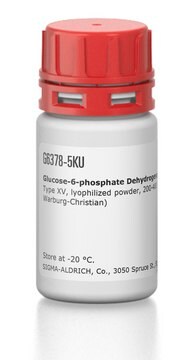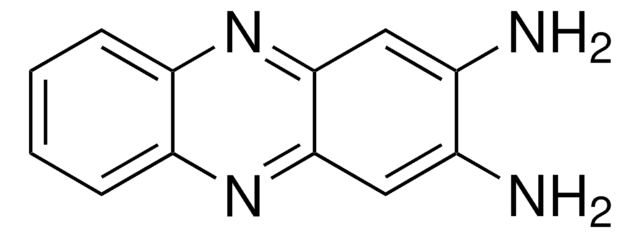Key Documents
P4544
Phenazine ethosulfate
≥95% purity, powder
Synonim(y):
N-Ethyldibenzopyrazine ethyl sulfate salt
About This Item
Polecane produkty
product name
Phenazine ethosulfate, ≥95%
Poziom jakości
Próba
≥95%
Postać
powder
rozpuszczalność
ethanol: 50 mg/mL, clear
Zastosowanie
diagnostic assay manufacturing
hematology
histology
temp. przechowywania
−20°C
ciąg SMILES
CCOS([O-])(=O)=O.CC[n+]1c2ccccc2nc3ccccc13
InChI
1S/C14H13N2.C2H6O4S/c1-2-16-13-9-5-3-7-11(13)15-12-8-4-6-10-14(12)16;1-2-6-7(3,4)5/h3-10H,2H2,1H3;2H2,1H3,(H,3,4,5)/q+1;/p-1
Klucz InChI
VDJKJPMLWJWQIH-UHFFFAOYSA-M
Szukasz podobnych produktów? Odwiedź Przewodnik dotyczący porównywania produktów
Opis ogólny
Zastosowanie
- in the spectrophotometric assessment of Plasmodium falciparum lactate dehydrogenase activity
- to study the use of the dye during culture of embryos on fetal and postnatal calf development
- to test and validate a fluorescence approach to quantify lipid content of individual bovine oocytes and blastocysts
Hasło ostrzegawcze
Warning
Zwroty wskazujące rodzaj zagrożenia
Zwroty wskazujące środki ostrożności
Klasyfikacja zagrożeń
Eye Irrit. 2 - Skin Irrit. 2 - STOT SE 3
Organy docelowe
Respiratory system
Kod klasy składowania
11 - Combustible Solids
Klasa zagrożenia wodnego (WGK)
WGK 3
Środki ochrony indywidualnej
dust mask type N95 (US), Eyeshields, Gloves
Wybierz jedną z najnowszych wersji:
Masz już ten produkt?
Dokumenty związane z niedawno zakupionymi produktami zostały zamieszczone w Bibliotece dokumentów.
Klienci oglądali również te produkty
plants
bovine oocytes and blastocysts
Protokoły
Recycling Micro-Assay of β-NAD and β-NADH
Nasz zespół naukowców ma doświadczenie we wszystkich obszarach badań, w tym w naukach przyrodniczych, materiałoznawstwie, syntezie chemicznej, chromatografii, analityce i wielu innych dziedzinach.
Skontaktuj się z zespołem ds. pomocy technicznej















